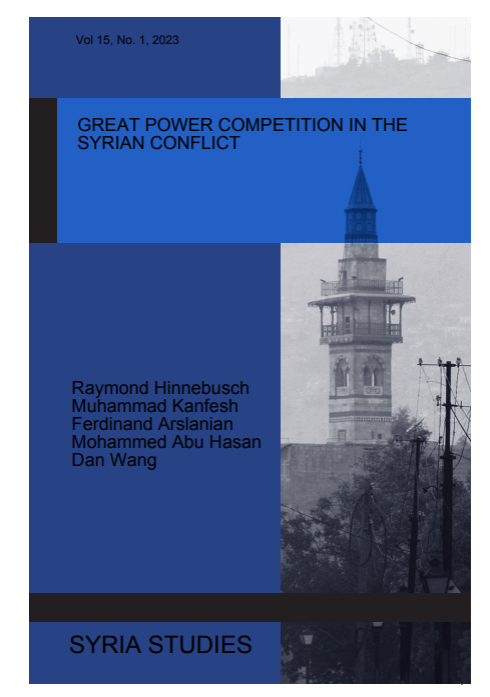In this issue of Syria Studies , we are pleased to share five studies that focus on intervention in the Syrian conflict by Great Powers. In this era of “great power competition,” Syria has been the target of rival powers seeking to affect outcomes, with, in particular, Russia and China backing the government and the US the opposition.
The first chapter by Raymond Hinnebusch gives a overview of the “New Struggle for Syria” engaging the US, Russia and China, that provides a macro-context for the subsequent studies. It looks at how these powers shaped a proxy war over territorial spheres of influence that metamorpized into an economic struggle waged around US sanctions over reconstruction. The second chapter, by Mohammad Kanfash, conceptualizes sanctions as siege warfare, and exposes the humanitarian harm that sanctions have imposed on Syrian civilians. The following study by Ferdinand Arslanian exposes the factors that determine whether sanctions succeeded, as intended, in dissociating the business elites from the regime, namely whether their business activity was mostly domestic or international and their degree of political integration into the regime. In the fourth study Muhammed Abu Hasan examines how Russia tried to generate soft power in Syria through humanitarian deliveries and instrumentalization of religious networks around the Orthodox church and the Chechen leader, Kadyrov. The last study by Dan Wang analyzes why China’s mediation diplomacy in the Syrian remained low profile—the few national interests at stake, its limited leverage over the parties and the intractability of the conflict. Altogether, the studies provide a multifaceted portrait of the objectives, strategies, and consequences of the intervening powers in the Syrian conflict. They combine meticulous original empirical cast in analytical frameworks that throw welcome new light on the New Struggle for Syria.
Published: 2023-07-27
